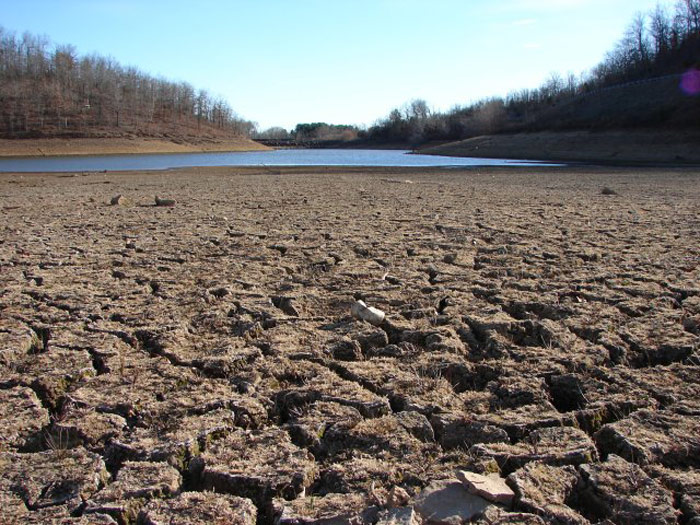
Robohub.org
Drought and desertification: How robots might help

Dry California riverbed. Source: Wikimedia Commons
Groundwater levels in California’s Central Valley are down to historic lows and reservoirs have been depleted following four consecutive years of severe drought in the state. California is set to introduce water rationing in the coming weeks, and though the new rationing rules will focus on urban areas and not farms for the time being, they serve as a warning bell to farmers who will inevitably need to adapt to the effects of climate change on food production. Long term solutions are needed to help make agriculture drought resistant. How could robotics help?
A NYTimes article published April 2nd, Mapping the Spread of Drought Across the U.S., leads off with an animated map supplied by the National Drought Mitigation Center, which shows the spread of drought conditions across the contiguous 48 states since late fall, 2014.
From that article:
Droughts appear to be intensifying over much of the West and Southwest as a result of global warming. Over the past decade, droughts in some regions have rivaled the epic dry spells of the 1930s and 1950s. About 37 percent of the contiguous United States was in at least a moderate drought as of March 31, 2015.
There are two major ways in which robots might help with the effects of climate change upon food production.
Most immediately, robots might operate indoor production facilities to produce high value, quickly maturing crops requiring moist environments. Because space would be at a premium in such facilities, and in most cases the lighting would be artificial, to make most best use of both, plants would need to be gradually spread apart as they grow, an operation well suited to pick-and-place robots, assisted by mobile robots serving them trays of plants. To operate most efficiently, that artificial light should be predominantly red and blue, since green light is mostly reflected away by plants; this might prove a stressful environment for human workers, but robots won’t care. Moreover, once an optimal configuration has been determined – how many trays of plants one pick-and-place robot can keep up with – the entire operation could easily be replicated as many times as needed, constrained only be available space, electrical power, and a market for the produce.
The other way in which robots might help is in dry fields under the hot sun. This could be as simple as reflective umbrellas, nets, or horizontal shutters that shade the ground from the mid-day sun, but uncover it again in the late afternoon to allow built up heat to radiate into the night sky. Robots could also maintain drip-irrigation systems or make daily rounds to inject water into the soil near root crowns.

image from: United States Drought Monitor
In principle, they could also perform planting, weeding, pest control, pruning, harvesting, and deal with plant materials left behind after harvest, and do it all while working a mixture of annuals between and around standing perennials – although much of the technology needed for such a scenario remains to be developed.
On the other hand, given that level of utility, much could become possible that currently is not. The weight of heavy machinery could be kept off of productive soil, rendering it more capable of holding water. Mulch could be applied at any time. When expected precipitation fails to materialize, plants could be pruned to reduce their leaf area and the amount of water they require. Windbreaks could be installed surrounding relatively small patches of land, in a manner not conducive to tractors and conventional implements, but affording much better protection from drying winds as well as providing a secondary crop of woody fiber and habitat for wildlife. If planted in low berms, those windbreaks could also help to keep what moisture there is in the fields and eliminate water erosion.
The benefits of such technology aren’t limited to coping with drought, of course, but given that drought is likely to be a widespread, persistent problem, robotics could be used to help keep marginal land – which might otherwise turn to desert – in sustainable production, and perhaps even help to reclaim some land that has already been lost to desertification, beginning, for example, with the construction of windbreak fences (like snow fences) to accumulate wind-blown dust that will become the berms into which living windbreaks can be planted. Windbreaks are an essential permanent feature of productive land in arid and semi-arid environments, so if a robot or set of robots is to tend land that is affected by drought it/they should be able to perform the operations necessary to establish and maintain a windbreak. Many windbreaks have been torn out because they impede the movement of large tractors, which require large fields to operate efficiently. Removing the motivation to tear out windbreaks and bringing the capability to replant them where they’ve already been torn out is one major way robots could contribute to making agriculture drought resistant.
tags: agricultural robotics, Environment-Agriculture, robohub focus on agricultural robotics


